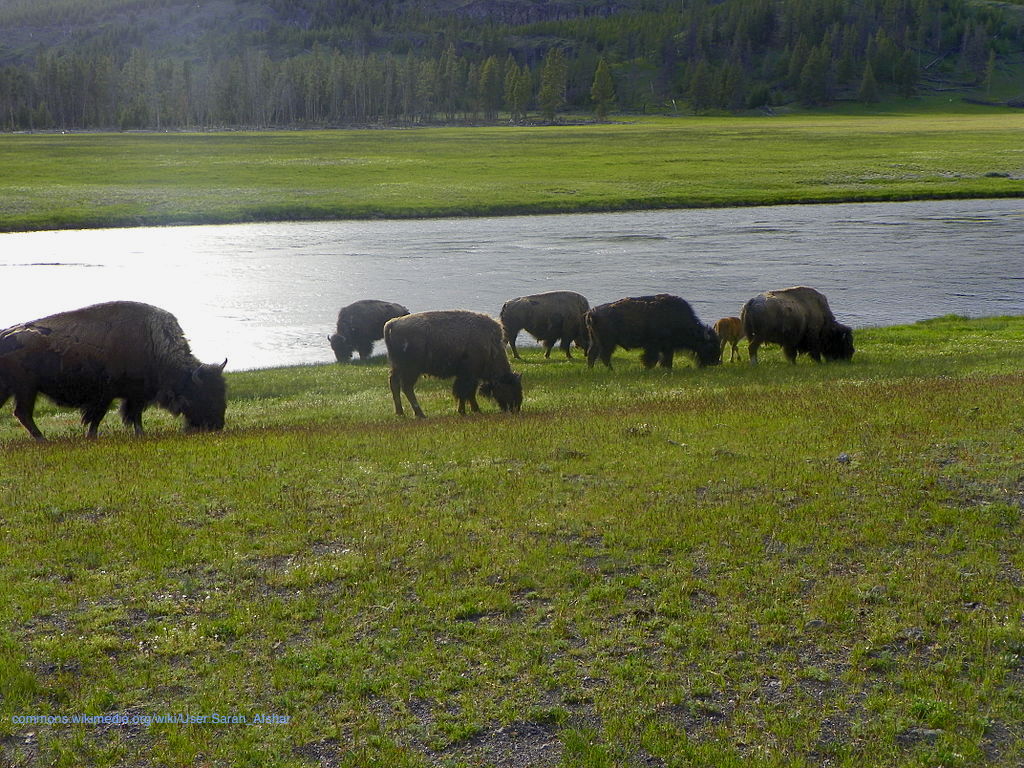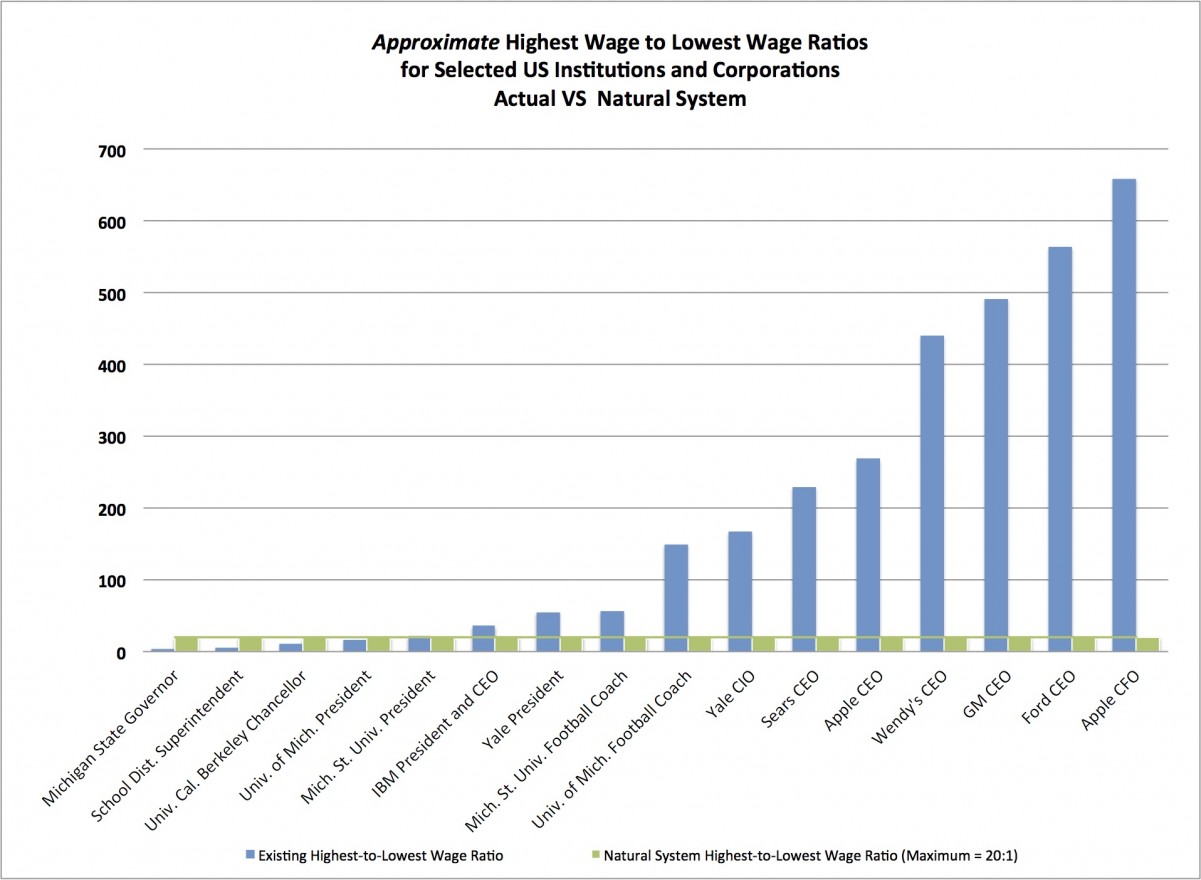
(Sarah Afshar/Wikimedia Commons)

(Sarah Afshar/Wikimedia Commons)
There is ample evidence that from numerous economic, environmental, and social vantage points, humans are not living sustainably on Earth. While the idea of sustainability is simple enough, the specifics are often unclear. Just which aspects of our behaviors and practices are sustainable, and which are unsustainable? And with the rapidly changing and complex economic, political, social, technological, and environmental problems before us, how can we truly know what is sustainable and what is not? We need a higher-level understanding of sustainability — an understanding that clarifies what sustainability is, and how it works in real situations. But where would we find this higher-level understanding? Perhaps in nature.
Over millions of years, wild plants and animals have figured out how to sustainably organize in the face of resource limitations, competing interests, and a changing environment. The bottom line in nature is that making excuses and passing the buck aren’t allowed—what doesn’t work in nature simply disappears, and what is less sustainable yields gradually to what is more sustainable. This has guided species, natural communities, and ecosystems to create what humans are now seeking to create—highly sustainable economies, communities, occupational groups, governmental systems, environmental relationships, cultures, and physiological patterns.
So, what can we really learn from nature? A lot.
When it comes to many contemporary issues, an understanding of sustainable natural patterns can anchor our debates, and give us focus. As an example, let’s take a look at income parity versus disparity. Many people (like the so-called “99 percent”) complain about income disparity. Is income disparity a sustainability problem in the USA? What does nature have to say about this topic?
In nature, within a given species, resource acquisition (essentially equivalent to human income) is not equal. For example, rabbits are not carefully doled out to coyotes at a rate of one per day. Rather, some coyotes are more successful than others in hunting, maintaining territory, raising pups, surviving, etc. And this doesn’t just go for coyotes. The same holds true for most others, like deer, turtles, oak trees, and asters. Thus, it appears that nature does not use absolute income parity to form its sustainable economic systems.
However, nature does seem to provide limits on how extreme income disparity can become. In nature, a majority of individuals within a species have “incomes” that are similar, i.e., within a ratio of about 2:1. Individuals that are rather successful or rather unsuccessful may have incomes that are less equal, but their incomes are still within a ratio of about 5:1. At the extreme ends, the income disparity between a very small percentage of highly successful and highly unsuccessful individuals stills falls within a ratio of about 20:1.
Now let’s compare that natural system income distribution to some contemporary human incomes. Using U.S. Census data from 2014, American wages can be averaged out by average household size, to produce a number that approximates income per person, including children and other non-working family members. When this is done, annual incomes range from almost $0, to many millions of dollars, with a median somewhere around $23,500. The distribution of this income variation looks something like the blue bars in the chart below, although this chart is truncated at $150,000, beyond which a very small percentage of people with even higher annual incomes are difficult to show graphically. Then, superimposed upon the chart in green bars is an approximation of how nature would distribute the same amount of money.

By looking closely, you may notice that by distributing the same amount of money differently, the median income of the natural system is a bit higher (about $24,500). The natural system’s lower end incomes would also be higher—perhaps about one-third of the median, rather than almost $0. Also, the natural system contains fewer individuals with incomes that are far higher (two, three, or four times higher) than the median.
In summary, judging U.S. income distributions from a sustainable natural system perspective, our lowest incomes are too low (and include too many people), and our very highest incomes include too many people.
But there’s more to the income distribution story. As already noted, the upper ratio limit of the extremely successful to the extremely unsuccessful in natural systems is roughly 20:1. Americans are famous for rewarding certain celebrities and business leaders with huge incomes. And what the above chart can’t show is the tiny percentage of people at those extremely high incomes. For example, top executives of many large companies earn multiple millions of dollars, and when compared with the lowest paid individuals in those companies, those extreme high incomes greatly exceed a 20:1 ratio. The chart below, which was created with readily available public information, shows approximate ratios of highest paid to lowest paid individual incomes of selected corporations and institutions in blue bars, and again the adjacent green bars show the 20:1 ratio—the approximate upper edge of disparity in nature. While we Americans are used to income disparities of 50-fold, 500-fold, or beyond, nature essentially suggests they are an unsustainable aspect of our economy. Note that the intent here is to make a point, not to pick on certain companies and institutions, as many others are certainly engaging in the same type of practice.

So do the 99-percenters have a valid complaint? If you trust nature here, apparently they do—that incomes in the US have become too unequal. However, on the flip side nature certainly does not support the notion that every person should have the same income.
Still, you might wonder if this income disparity is trivial relative to the wealth gap in the US, i.e. the “superrich versus the incredibly poor.” Is that also a sustainability problem, as nature would see it? Yes, it is, but not for the reasons you might think! This display of existing versus natural income ratios is just one example of how nature can teach us to see in different, and often very informative ways. In fact, nature can teach us a great deal not only about sustainable income and wealth, but about sustainable dynamics, interdependence, personal responsibility, waste, successional change, competition and system coordination, timeframes and time lags, group cohesion, group decision making and representation, expression, group formation and survival, government, resilience, diversity, innovation, and management. Issues such as these are discussed at length in the book, The Nature of Sustainability.
—
Steve A. Thomas is the author of The Nature of Sustainability, which provides a comprehensive model of sustainability based upon physics and nature. You can learn more and contact him at natureofsustainability.com